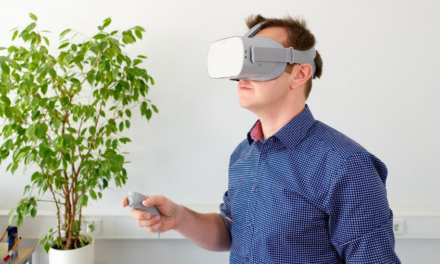When we admire a scenic landscape or recognize a friendly face in a crowd, we’re performing tasks our brain has been honing for millennia. Now, imagine teaching a machine to do the same. That’s the exciting world of computer vision, a field in AI that’s transforming industries.
But, how does a computer learn to see? How can it identify a cat in a picture or a car on the road with stunning accuracy? The secret lies in well-annotated, high-quality data. So, let’s take a closer look at this process and explore how data annotation can boost the accuracy of computer vision tasks.
The Scope of Computer Vision Tasks
Computer vision is a branch of artificial intelligence that enables machines to comprehend visual information. It is not only a fascinating idea, but it is also demonstrating its effectiveness. For instance, traffic detection and monitoring systems powered by computer vision were found to be over 91% more reliable than traditional human-operated systems. Quite a leap, isn’t it?
Now, let’s delve into some of the main tasks that contribute to this effectiveness of computer vision:
- Image recognition: Remember how your phone identifies and tags people in your photo gallery. That’s an example of image recognition.
- Object detection: This is what helps a self-driving car avoid pedestrians or other vehicles on the road. The machine isn’t just recognizing, it’s precisely locating multiple objects within an image.
- Semantic segmentation: Smart agricultural systems, powered by computer vision, can separate crops from weeds. This precise identification allows for more targeted pesticide application. Semantic segmentation, where every pixel in an image gets a label, makes this possible.
- 3D object reconstruction: If you’ve used an app to check how a new sofa might fit in your living room, you’ve experienced 3D object reconstruction. The process captures the shape and appearance of real objects from images, and constructs their 3D models.
Each of these tasks, unique in their complexity and functionality, relies on one common element: labeled data. This is the invisible cogwheel that drives the smooth functioning of computer vision.
The Role of Data Annotation in Computer Vision
Computer vision, at its core, is powered by data annotation. It’s a meticulous process of labeling or tagging raw data, such as images or videos. And so labeled data, functions as a comprehensive guide for the machine to understand and learn from visual data.
Take the task of teaching a machine to recognize a cat in an image, for instance. The machine is fed with annotated data, where different images of a cat are tagged as ‘cat’. Through this, the machine learns to recognize a cat from different viewpoints, in varying light, and of different sizes. The same rule applies to more complicated tasks. For instance, labeled data can be used to educate an autonomous car’s algorithm to recognize pedestrians or obstacles on the road. This highlights the value of versatile data for training AI systems.
But it all starts with raw, unlabeled data. Expert annotators then step in to tag this data accurately. Their methods can range from:
- Creating bounding boxes around objects in a picture that a self-driving car needs to notice. This could be pedestrians, other cars, or traffic lights.
- Using polygon annotation for irregular shapes that need exact outlining. This could be to spot tumors in medical imaging.
- Applying semantic segmentation, where we label each pixel in an image. This is vital for understanding scenes in detail. It can be used to separate crops from weeds in precision farming.
- Creating 3D cuboids to understand spatial dimensions. It could estimate the distance of other cars or obstacles for self-driving cars.
- Implementing keypoint annotation, aka landmark annotation, to mark particular points on an object. This is useful in tasks like estimating poses or recognizing faces.
Different annotation methods fit different model needs and tasks. It’s like picking the right tool for the work. Data annotation’s precision shapes how a machine ‘sees’ and grasps its surroundings. It’s vital for our safety and the machine’s reliability. Thus, picking trustworthy data annotation services can guarantee your project’s success.
The Right Fit: Choosing Suitable Annotation Services for Computer Vision Projects
Selecting the right annotation service for a computer vision project is crucial. An ideal data labeling service provider aligns with your project’s rhythm and requirements. This is necessary in delivering top-notch results.
Here are a few factors to consider when making your choice:
- Quality: An outstanding annotation service delivers high-quality outcomes. The accuracy of the annotated data has a direct impact on the machine learning model’s performance.
- Scalability: Can the service handle your project as it grows? Scalable solution and data annotation team ensure your project won’t be stalled due to volume increase.
- Security: With sensitive data often involved in computer vision initiatives, robust security measures are non-negotiable. A data labeling company should have stringent protocols in place to protect your data.
- Domain expertise: Depending on the project, you might need a service with specific domain knowledge. It’s important to find an annotation service that can offer specialists familiar with your project’s needs.
Computer vision services that excel in these areas can provide the right foundation for your AI project. Making an informed decision when choosing an annotation service can be the difference for a great machine learning model. It’s about setting the stage right for your AI to dance to the rhythm of success.
Final Words
In the rapidly evolving world of AI, the adage ‘the devil is in the details’ holds true. Accurate labels from are necessary in making computer vision work and benefit us in many ways. Precise labeling is not just an advantage but a requirement for computer vision to function effectively.
In the broader scope of AI, computer vision stands as a vibrant testament to technological advancement. And with suitable annotation services, computer vision can reach its full potential and enhance our lives. Keep in mind, it’s not only about data; the understanding and interpretation is what truly sets it apart.
















